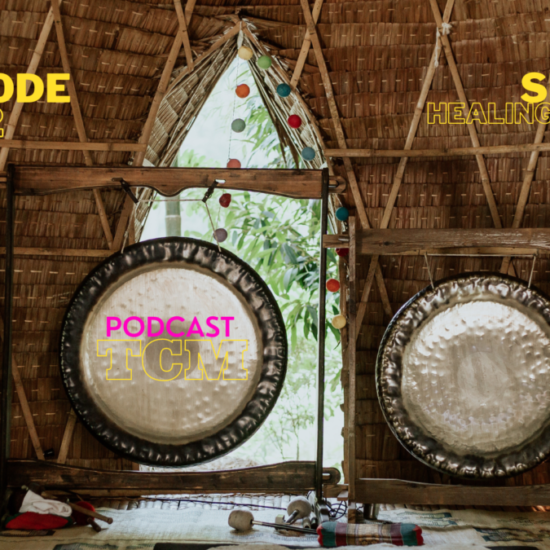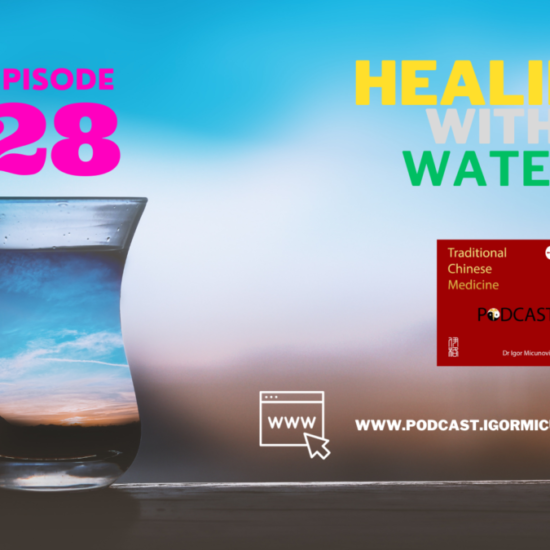The famous Chinese physician Sun Simiao (Chin. 孙思邈) exclaimed:
There is nothing that cannot be a medicine.
Following his idea, there’s no fundamental difference between medicines and poison; because in the right amount, anything can be a medicine.
At first glance, medicine and poisons seem to belong to opposite sides. However, in China’s pharmacology, poisons are widely used as healing properties. At some point, it emerged the idea that the usage of strong poisons can contribute to enhancing life or even regaining immortality. Chinese medicine doctors patented medical techniques in order to apply the right amount of poison for medical purposes. Chinese medicine classified poisons according to their healing power but not toxicity, which was second of importance.
A traditional saying in China express their fundamental view of poisons:
Use poison as an antidote.
(Chin. yi du gong du以毒攻毒 )
In ancient China, it was popular using poison to cure poison. To accomplish that goal Chinese used to drink realgar wine which contains arsenic sulfide. A popular custom they practiced in order to protect themselves was wearing Five poisons amulets (Chin. wǔdú qián五毒錢), which contained pictures of the 5 poisonous animals (snakes, scorpions, centipedes, toads, and spiders).
Greek physician Pedanius Dioscorides wrote De Materia Medica (50-70 CE) which is the foundation pharmacopeia of medicinal plants in Western pharmacology and contains more than sixty toxic drugs, such as opium poppy, mandrake, and hemlock, collected to treat diseases. Unlike Greek medicine which prescribed poisons regarding their toxicity, Chinese medicine, prescribed drugs because they contain poisons.
Du (Chin.毒) – historically has two equally important meanings in China, a healing toxic and a poison. It exists different concepts of well-being in ancient China and contemporary times. Chinese pharmacology in its foundation sees a completely materialistic world as useful in the scope of healing.
Chinese medicine incorporates mild procedures, e.g. food therapy, with the function to balance the body, mind and spirit, and connect it to the universe, and use toxic drugs that might brutally destroy or expel pathogenic agents.
Throughout history, Chinese medicine doctors have often used herbal and mineral substances containing du. Aconite (Chin. Fuzi 附子), for instance, is a very toxic herb grown in southwestern China and is in fact one of the most frequently prescribed drugs in Chinese medicine.
Chinese doctors in ancient times included many toxic substances in the drugs in order not only to cure but also to extend life. It was a popular belief that it’s possible to shape the transformation of the body into higher states of being and achieve longevity. Such a process included purification of the body, and the highest goal to attain was immortality. Most of the drugs used for the higher purpose could be used regularly on a daily scale, such as minerals, cinnabar, arsenic, and sulfur.
Chinese medicine incorporates Daoists elements because drugs used to straighten the body were mostly from Daoist scriptures. Pre-modern culture in China witnessed no clear boundaries between religion and medicine, therefore drug therapy, talismanic healing, meditation, and incantation, were used together.
In the ascending years of Chinese medicine, the meanings of du were more complex than the negative sense of “poison”, as it’s associated nowadays. Collecting potent drugs and eliminating illness without negative consequences to someone’s life was part of the time art of healing in Chinese medicine.
Poisons are dangerous substances, but also have great healing potential. Doctors in China were fully aware of this fact, therefore they created different methods to prepare and use it in a variety of situations.
Alchemy of poisons
Historically Chinese medicine view poisons as tools used in demonic exorcism, and to combat pests. During early history, Chinese doctors advised patients to carry talismans containing arsenic. Famous frequently prescribed formula used to expel poisons from the body was made of aconite and realgar.
Since 3rd Century CE, Chinese medicine knew about infectious and epidemics diseases. Famous doctor Zhang Zhongjing (張仲景) 150–219 CE, invented still the widely used methods of using poisons to cure infection and epidemics. Such condition in Chinese medicine is described as pestilence attack or cold attack.
“External alchemy” (Chin. waidan外丹) represents complex methods and procedures with aim of elixirs production, in order to attain higher states of being and eventually become immortal. Alchemy has a long history in China from the time of Han period (206 BCE–220 CE) until its public exposure in 10th century CE. The usual ingredients used in alchemic procedures were poisons, such as mercury, arsenic, sulfur, and lead. General idea was to use such materials e.g. cinnabar, which contains mercury, as solid materials, compared to herbs which dissolute in the body. Such materials should transform the body into a solid form as well.
Immortality for ancient Chinese represents different transformative levels of the body, mind and soul. Such transcendence even correlates to death, which in return will ultimately be a transition point in achieving a higher state of existence. In case of visible poisoning, they used vinegar and sal ammoniac, as tools to detoxify poisons.
Poisons techniques
Chinese medicine doctors developed a number of pharmaceutical techniques, such as dosage control, drug combination, and drug processing, in order to transform poisons into medicines. Such techniques represent the fundamentals of Chinese medicine practice.
From the early stages of classical Chinese medicine, the technical manipulation of drugs constituted the core of pharmaceutical practice. An important aspect was the final production method. Medical drugs could be made into pills, powders, decoctions (boiled/decoct in water, or soaked in alcohol), and pastes. As a rule, liquids tend to deliver a faster effect as a drug compared to solid forms and are faster digested as well. Because of these characteristics poisonous drugs were often taken as pills or powders to be digested slowly in the body.
Chinese doctors believed in one more important factor; specific condition of a patient’s body and living conditions. For example, in the case when a person is deficient, it was necessary to replenish the body, or in case of excess, it was necessary to drain it.
We can find two major types of drugs in Chinese medicine: raw (unprocessed) and cooked (processed). For example: more than fifty species of aconite are used in Chinese medicine today, including the most popular Aconitum carmichaelii from northern Sichuan. The main toxic component in aconite is aconitine-type alkaloid. For instance, 0.2 mg of it taken orally, is enough to suffice a person, with accompanying symptoms of dizziness, nausea, and numbness of the limbs; 3–5 mg may cause death following cardiovascular and neurological failure. However, if administered in smaller doses, aconitine and other alkaloids in the herb can relieve pain, reduce inflammation, and strengthen the heart.
Great Pharmacopoeia – Bencao Gangmu (Chin. 本草綱目) written 1578 by Li Shizhen (Chin. 李时珍) 1518–1593 CE, during the Ming Dynasty represents the most advanced system in Chinese medicine regarding poisons, where poisons (du) were described and systematized. The book contains a registry of 47 poisonous herbs, such as opium, which was described only as a warm herb for therapy of stomachache and diarrhea.
Supervision of poisons
Speaking about poisons and their institutional supervision, since the time of the Eastern Han period 25-220 CE, the Chinese empire established offices for the supervision of healing practices and the preparation of drugs for the imperial family and court officials. Also, it developed recruiting patronage system for new medical professionals.
Northern Wei dynasty (386–534 CE) established the foundation for the future Imperial Medical Bureau (Chin. Taiyi Shu太医署), and through Sui Dynasty 581–618 CE, finally fully developed Imperial medical bureau during Tang dynasty 618 to 907 CE. Bureau’s aim was to train medical specialists and to provide medical services, such as general medicine (internal medicine, dermatology, ORL, and cupping), acupuncture, medical exercises, as an incantation.
In case if an employee commits imperial medical malpractice or a mistake, the punishment was serious, with usually prescribed hanging to the death penalty for involved specialists (or pharmacy sellers), e.g. mistakes made in formula preparation, dosage or property of ingredients.
Newly Revised Materia Medica (Chin. Xin Xiu Ben Cao新修本草) from 659 CE was commissioned by the government of the Tang Dynasty (618–907 CE). It includes records of 850 medical ingredients and is considered to be the earliest national pharmacopeia in China. Book contributors invested great effort in drug classification.
Famous Chinese medicine doctor Sun Simiao (Chin. 孙思邈) 581-682 CE, patented herbal prescription Genkwa Powder (Chin. Yuanhua San芫花丸) which contains sixty-four herbs, including eighteen poisonous (du) ones. He remarks that certain things in the world do not act according to regular rules, but their efficacy has to be clinically tested and proved. Since that time, China witnessed medical prescription clinical testing.
Use of du materials in contemporary times
When the western scientific approach become widely accepted in China from the beginning of the twentieth century, Chinese medicine experienced serious trauma. However, relations between Chinese and modern medicine changed their position in the second half of the twentieth century. Chinese medicine secures its rightful position when becomes globally available.
Nowadays in Chinese pharmacies are used a variety of potentially poisonous substances, such as aconite, cinnabar, and snake gallbladders. All potent drugs are classified according to modern medical toxicology, regulated and administered with extreme caution.
Because of Chinese medicine’s transformation and shift to modern clinical testing, many new natural drugs have been developed. One example of Chinese medicine use of poisons is the medical formula made by Chinese medical scientist Zhang Tingdong (Chin. 张亭栋) from Harbin. During the ‘70s, doctor Zhang was chief of the Chinese medicine research team. They modified and further developed for centuries known traditional Chinese medicine formula, which contained arsenic, mercury, and toad venom. From the formula, they identified arsenic trioxide as the key ingredient that was particularly effective for treating patients of acute promyelocytic leukemia (APL). As China was closed at that time, it took the international community 20 years to learn about their research. Even today arsenic trioxide is the most effective drug for combatting leukemia during chemotherapy.
There were also negative processes regarding Chinese medicine usage of poisons. Famous Chinese medicine formula Long dan xie gan wan was strongly opposed by the scientific community during 1990s because of its ingredient, a herb called Aristolochia (Chin. Mutong 木通根). That herb contains aristolochic acid, which has been proved to be able to provoke kidney failure, bladder cancer, and liver cancer.
In conclusion, we can see a very long history of the usage of poisons in China, and we can objectively recognize the perseverance and bravery of the Chinese in the usage of poisons as healing tools. Through clinical testing over the course of history, Chinese medicine doctors developed techniques and poisons safety systems which is an incredible source of knowledge and possibly unique research material for developing future novel drugs.


